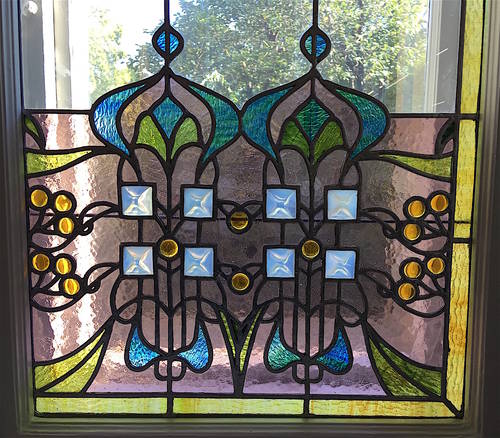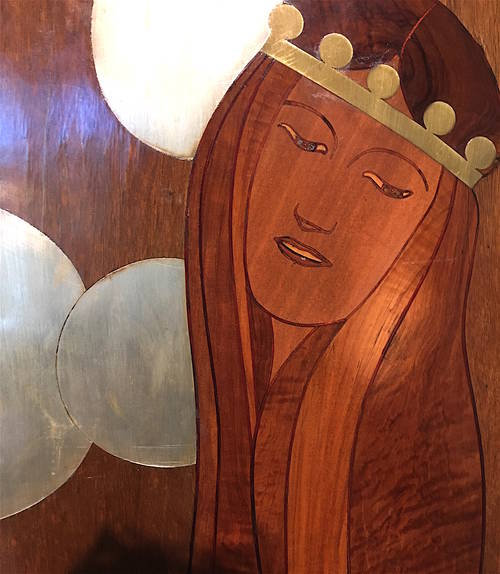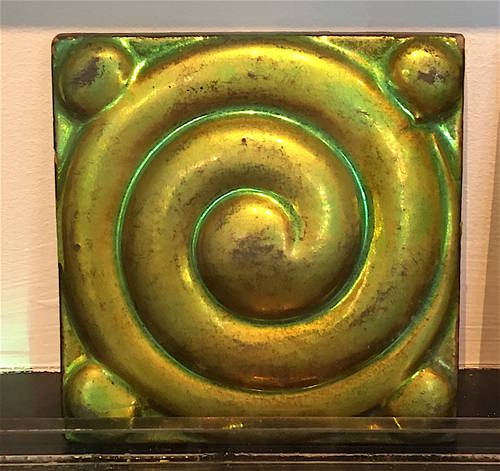The age of graceful living, in the closing years of the 20th century, is vividly evoked in the newly-reopened villa of the Hungarian collector György Ráth. Ráth was director of the Hungarian Museum of Applied Arts between 1881 and 1896 and during his tenure, the museum collection was augmented with fine works of sculpture and furniture as well as objets d’art. His handsome villa, on the wide, leafy boulevard leading to City Park, was also something of a show-home. He and his wife were celebrated for the magnificent silver and porcelain of their dining table and the spacious reception rooms were tastefully dotted with choice objects, as well as furnished with stately and ponderous items designed by the Historicist architect Albert Schickedanz. The atmosphere of those times has now been marvellously recreated.
Ráth died in 1905 and his wife donated the villa and its contents to the Hungarian state. After many years of closure, it reopened to the public this autumn with a new permanent exhibition tracing the evolution and development of Art Nouveau.

The display begins in Britain, the cradle of the Arts and Craft movement, where in response to the rapid rise of industrialisation, William Morris in England and Charles Rennie Mackintosh in Scotland placed an emphasis on the hand-made and the artisanal. The ‘Skoal’ vase by Walter Crane (c. 1885), featuring a pair of Norse warriors quaffing from drinking horns, is a prize piece. On the same floor, trends in Austria and France are explored. There is furniture by designers of the Wiener Werkstätte (notably Koloman Moser and Joseph Hoffmann), Thonet bentwood chairs, and lamps by Tiffany and Gallé (particularly spectacular is a gilded lamp-sculpture of Loie Fuller, the shade formed by her billowing drapery).

In all the rooms, careful attention has been paid to the ancillary fixtures and fittings. All the wallpaper has been designed in keeping, picking out and repeating patterns from some of the objects on show. The carpets are carefully chosen (in some cases purpose-made) as are the ceiling lamps. Especially fine is the globular ceiling lamp imitating a ball of mistletoe, by the Hungarian metalsmith Gyula Jungfer (and you can stand beneath it with impunity; the tradition of kisses under the mistletoe is not a Hungarian one).
In the Art Nouveau Dining Room (with sound effects of clinking cutlery), the wall text prompts you to note the complete absence of straight lines. You are plunged into a world of sinuous arcs and whiplash curves. Everything bends, even the floppy-stemmed wine cups on the dining table (contemporary, by Gergely Pattantyús). There is cutlery by Christofle and faïence by the celebrated Hungarian firm of Zsolnay. Also by Zsolnay is the selection of plates designed by the painter József Rippl Rónai, each one different, for the Art Nouveau dining room of Count Tivadar Andrássy (1898). The wallpaper in this room uses a pattern from one of them.
Upstairs (note the fine, creaking wooden staircase) is a long gallery with display cases stuffed with treasures: more glassware by Tiffany and Gallé; jewellery by Lalique; metalwork by Ö. Fülöp Beck and decorative vases, bowls, platters and wine cups by Zsolnay. There are wall tiles too, covered with the lovely iridescent ‘eosin’ glaze which the Zsolnay manufactory pioneered.

The last room explores specifically Hungarian trends in the genre, works that are not only made and designed by Hungarian artists in the Art Nouveau style but which are also Hungarian-themed. There are tapestries from the artists’ colony of Gödöllő (a town just east of Budapest) illustrating stories from Hungarian legend; a screen of c. 1909 designed by Károly Kós (best known for his folk-revival architecture) showing the death of Attila the Hun; and a plain but beautiful chair by Béla Lajta, designed for the Jewish Institute for the Blind, with a folk motif of a bird carved shallowly on its backrest.
As you leave, be sure to pay your respects to the bust of György Ráth himself, in the entrance lobby. His fine likeness in bronze (1894, by Alajos Stróbl) is placed next to a marble bust of his wife (same date and sculptor). Ráth is dressed in ceremonial Hungarian attire. The original cloak chain, clasp and buttons, meticulously depicted in the sculpture, can be seen in the adjacent glass case, along with his gilded spurs. This is a delightful show. You are likely to want to visit it more than once. The next step will be to pay some attention to the villa’s garden, where the original allegorical statues of the Four Seasons still stand.
Art Nouveau: A Hungarian Perspective
Now showing at the György Ráth Villa in Budapest (Városligeti fasor 12; open Tues–Sun 10–6).






